APP (基因名), Amyloid-beta A4 protein (蛋白名), A4_BOVIN.
产品名称:
Bovine APP/ Amyloid-beta A4 protein ELISA Kit
淀粉样β前体蛋白
货号:
E0946b
商标:
EIAab®
监管等级:
别名:
ABPP, Alzheimer disease amyloid A4 protein homolog, Amyloid precursor protein, Amyloid-beta precursor protein, APP
检测方法:
ELISA
实验类型:
Sandwich
检测范围:
0.312-20ng/mL
灵敏度:
0.082ng/mL
特异性:
Natural and recombinant bovine Amyloid-beta A4 protein
样品类型:
Serum, plasma, tissue homogenates, cell culture supernates and other biological fluids
样品数据:
登录.
实验步骤:

研究领域:
Neurosciences
通用注释
亚单元:
Binds, via its C-terminus, to the PID domain of several cytoplasmic proteins, including APBB family members, the APBA family, MAPK8IP1, SHC1 and NUMB and DAB1 (By similarity). Binding to DAB1 inhibits its serine phosphorylation (By similarity). Interacts (via NPXY motif) with DAB2 (via PID domain); the interaction is impaired by tyrosine phosphorylation of the NPXY motif. Also interacts with GPCR-like protein BPP, APPBP1, IB1, KNS2 (via its TPR domains), APPBP2 (via BaSS) and DDB1. In vitro, it binds MAPT via the MT-binding domains (By similarity). Associates with microtubules in the presence of ATP and in a kinesin-dependent manner (By similarity). Interacts, through a C-terminal domain, with GNAO1. Interacts with CPEB1, ANKS1B, TNFRSF21 and AGER (By similarity). Interacts with ITM2B. Interacts with ITM2C. Interacts with IDE. Can form homodimers; dimerization is enhanced in the presence of Cu(2+) ions. Can form homodimers; this is promoted by heparin binding (By similarity). Interacts with SORL1 (via N-terminal ectodomain); this interaction retains APP in the trans-Golgi network and reduces processing into soluble APP-alpha and amyloid-beta peptides (By similarity). Interacts with PLD3 (By similarity). Interacts with VDAC1 (By similarity). Interacts with NSG1; could regulate APP processing (By similarity). Amyloid-beta protein 42 interacts with FPR2 (By similarity). Interacts with LRRK2 (By similarity).
功能:
Functions as a cell surface receptor and performs physiological functions on the surface of neurons relevant to neurite growth, neuronal adhesion and axonogenesis. Interaction between APP molecules on neighboring cells promotes synaptogenesis. Involved in cell mobility and transcription regulation through protein-protein interactions (By similarity). Can promote transcription activation through binding to APBB1-KAT5 and inhibit Notch signaling through interaction with Numb (By similarity). Couples to apoptosis-inducing pathways such as those mediated by G(O) and JIP (By similarity). Inhibits G(o) alpha ATPase activity (By similarity). Acts as a kinesin I membrane receptor, mediating the axonal transport of beta-secretase and presenilin 1 (By similarity). May be involved in copper homeostasis/oxidative stress through copper ion reduction (By similarity). In vitro, copper-metallated APP induces neuronal death directly or is potentiated through Cu(2+)-mediated low-density lipoprotein oxidation (By similarity). Can regulate neurite outgrowth through binding to components of the extracellular matrix such as heparin and collagen I and IV. Induces a AGER-dependent pathway that involves activation of p38 MAPK, resulting in internalization of amyloid-beta peptide and mitochondrial dysfunction in cultured cortical neurons. Provides Cu(2+) ions for GPC1 which are required for release of nitric oxide (NO) and subsequent degradation of the heparan sulfate chains on GPC1 (By similarity).
亚细胞位置:
Gamma-secretase C-terminal fragment 59
Nucleus
Cytoplasm
Located to both the cytoplasm and nuclei of neurons. It can be translocated to the nucleus through association with APBB1 (Fe65). In dopaminergic neurons, the phosphorylated form is localized to the nucleus (By similarity).
该产品尚未在任何出版物中被引用。
[1].
牛淀粉样β前体蛋白(APP)ELISA试剂盒可以做多少个样本?
牛淀粉样β前体蛋白(APP)ELISA试剂盒分为2种规格,96孔和48孔。96孔的试剂盒,标曲和样本都做复孔的话,可以检测40个样本。96孔的试剂盒,标曲和样本都不做复孔的话,可以检测88个样本。
[2].
牛淀粉样β前体蛋白(APP)ELISA试剂盒使用视频?
牛淀粉样β前体蛋白(APP)ELISA试剂盒实验操作视频在以下网址中,对每一步的实验步骤都做了演示,方便实验员能更好地理解ELISA实验的过程。
https://www.eiaab.com.cn/lesson-tech/805.html
https://www.eiaab.com.cn/lesson-tech/805.html
[3].
牛淀粉样β前体蛋白(APP)ELISA试剂盒是放在-20℃冰箱保存吗?
EIAab的牛淀粉样β前体蛋白(APP)ELISA试剂盒,洗涤液、底物、终止液保存于4℃,其余试剂-20℃冰箱保存。
[4].
牛淀粉样β前体蛋白(APP)ELISA试剂盒原理?
双抗体夹心法:用纯化的抗体包被微孔板,制成固相抗体,往包被有固相抗体的微孔中依次加入标准品或受检样本、生物素化抗体、HRP标记的亲和素,经过彻底洗涤后用底物TMB显色。用酶标仪在450nm波长下测定吸光度(OD值),计算样本浓度。
竞争法:用纯化的抗体包被微孔板,制成固相抗体,往包被有固相抗体的微孔中依次加入标准品或受检样本和生物素标记的目标分析物,受检标本中抗原与生物素标记抗原竞争结合有限的抗体。再加入HRP标记的亲和素,经过彻底洗涤后用底物TMB显色。用酶标仪在450nm波长下测定吸光度(OD值),计算样本浓度。
竞争法:用纯化的抗体包被微孔板,制成固相抗体,往包被有固相抗体的微孔中依次加入标准品或受检样本和生物素标记的目标分析物,受检标本中抗原与生物素标记抗原竞争结合有限的抗体。再加入HRP标记的亲和素,经过彻底洗涤后用底物TMB显色。用酶标仪在450nm波长下测定吸光度(OD值),计算样本浓度。
[5].
牛淀粉样β前体蛋白(APP)ELISA试剂盒中需要使用的样品量是多少?
夹心法100μL/孔,竞争法50μL/孔。如样本浓度过高时,应对样本进行稀释,以使稀释后的样本符合试剂盒的检测范围,计算时再乘以相应的稀释倍数。
[6].
如何分析牛淀粉样β前体蛋白(APP)ELISA试剂盒数据?
建议标准曲线,并计算样本浓度。对于elisa的曲线拟合,一般建议采用4参数曲线拟合,4参数曲线拟合通常更适合免疫分析。推荐使用专业软件进行曲线拟合,例如curve expert 1.3。根据样本的OD值由标曲查出相应的浓度,再乘以稀释倍数;或用标准物的浓度与OD值计算出标曲的回归方程式,将样本的OD值代入方程式,计算出样本浓度,再乘以稀释倍数,即为样本的实际浓度。以下链接是curve expert 1.3软件拟合曲线的方法。
https://www.eiaab.com.cn/news/502/
https://www.eiaab.com.cn/news/502/
[7].
牛淀粉样β前体蛋白(APP)ELISA试剂盒中是否包含人和动物的副产物,是否包含感染的或者传染性原料如HIV等?
除了抗体和稀释液中的BSA,不含其它人和动物的副产物,也不含感染材料。
[8].
收集牛淀粉样β前体蛋白(APP)ELISA试剂盒血浆样本,用什么作为抗凝剂?
一般建议用EDTA和肝素作为抗凝剂。
[9].
牛淀粉样β前体蛋白(APP)ELISA试剂盒酶标板可以拆成几部分?拆的时候是否需要避光,无菌?
牛淀粉样β前体蛋白(APP)ELISA试剂盒酶标板是8×12孔条,可拆卸,板子可以拆成12条,注意避免孔污染,不需要避光和无菌。暂时不用的板子,放回原来装的袋子里,密封保存。
[10].
牛淀粉样β前体蛋白(APP)ELISA试剂盒样本如何保存?
尽量检测新鲜样本。若无新鲜样本,则4℃保存1周,-20℃保存1个月,-80℃保存2个月。
反馈墙
评论数 : 0
所有用户
所有用户
默认排序
默认排序
最近
早期
目前还没有评论。






通知
规格
数量
单价 (¥)
小计 1 (¥)
小计 2:
¥

规格
数量
单价 (¥)
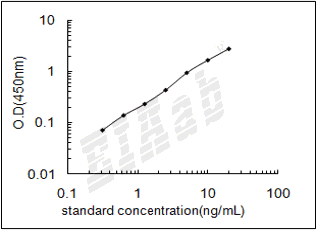




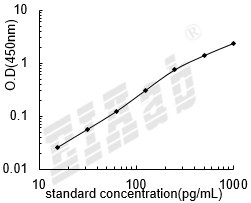
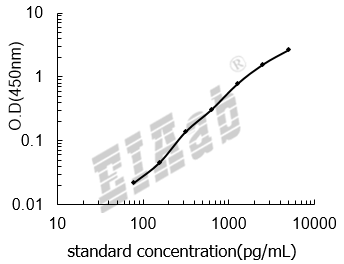
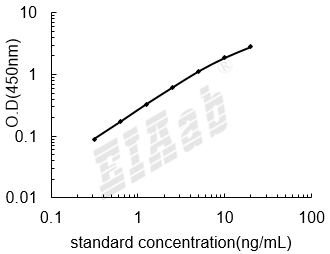
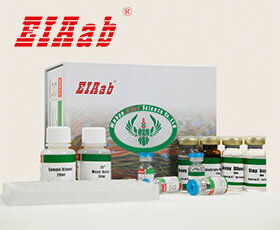
 验证序列:
验证序列:




 折扣:
折扣: